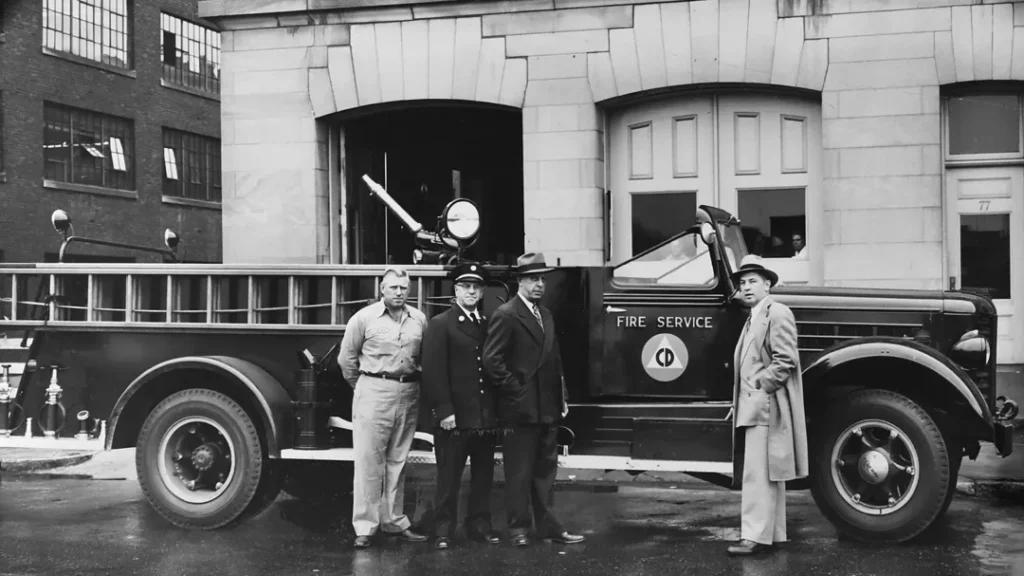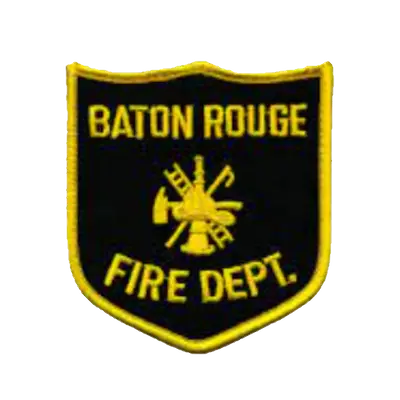In the realm of public safety, encompassing police departments, fire departments, and emergency medical services (EMS), branding emerges as a pivotal aspect far beyond the traditional commercial context. It is a comprehensive strategy that shapes public perception, builds trust, and fosters community engagement, playing a crucial role in the effectiveness and efficiency of these agencies.
This article delves into the multifaceted importance of branding for public safety agencies, highlighting how it impacts various aspects of their operations and public relations.
Building Trust and Positive Public Perception
The cornerstone of effective public safety is the trust and confidence of the community. For police, fire, and EMS departments, branding is instrumental in shaping public perception. A well-thought-out brand reflects values like reliability, professionalism, and community commitment.
According to the Harvard Business Review, “Trust is the basis for almost everything we do. It’s the foundation on which our laws and contracts are built. It’s the reason we’re willing to exchange our hard-earned paychecks for goods and services, to pledge our lives to another person in marriage, and to cast a ballot for someone who will represent our interests. It’s also the input that makes it possible for leaders to create the conditions for employees to fully realize their own capacity and power.”
See what we’re getting at?
Effective Communication and Information Dissemination
In a crisis or emergency, clear communication from public safety agencies can be the difference between life and death. A strong branding strategy ensures that information is disseminated promptly, accurately, and consistently to the public. With a recognizable brand, people are more likely to trust and engage with official channels during emergencies.
Furthermore, branding allows public safety agencies to establish a consistent voice and tone in their communication, making it easier for the public to understand and follow instructions. This can be especially crucial during large-scale emergencies when multiple agencies are involved.
Enhancing Community Engagement Across All Fronts
Branding for public safety agencies is about creating a narrative that resonates with the community. This narrative, encompassing values, missions, and visions, encourages community engagement. A strong brand identity makes these agencies more approachable and relatable, fostering a sense of community safety and well-being partnership.
This is particularly crucial for fire departments and EMS, where community awareness and education play significant roles in preventing emergencies and ensuring timely responses.
Recruitment and Internal Morale
Public safety agencies face unique challenges in recruitment and retention. A compelling brand attracts individuals whose values align with the agency’s, thereby aiding in recruiting dedicated personnel.
Moreover, a robust internal brand cultivates a sense of pride and commitment among existing staff, which is crucial for job satisfaction and morale, especially in high-stress environments like law enforcement, firefighting, and emergency medical services.
Maintaining Consistency in Communication Through Brand Guidelines
Clear and consistent communication is pivotal in the context of public safety, particularly in critical situations where it can significantly influence outcomes. Branding is the backbone for this coherence, ensuring all messaging aligns with the agency’s core values and objectives. This uniformity is crucial in crisis management, where the dissemination of information must be both timely and straightforward to manage the situation effectively and guide community response.
For example, a fire and rescue service may employ a set of comprehensive brand guidelines, much like the above from Sioux Falls Fire Rescue. These guidelines are instrumental in dictating visual elements such as logos, color schemes, and the overall tone of communication. They help maintain a consistent narrative across various platforms, from official press releases to social media updates.
In a tangible sense, these guidelines act as a blueprint for crafting communications. They ensure that every piece of content, whether it’s a safety announcement, a community alert, or a recruitment advertisement, is immediately recognizable and reflects the professionalism and readiness of the service. By adhering to these guidelines, a public safety agency like a fire and rescue service can reinforce its brand identity, promoting a sense of reliability and assurance among the public.
Thus, these brand guidelines are not just a reference for maintaining visual consistency but a critical tool for aligning all communication efforts with the agency’s mission. In doing so, they uphold the brand’s integrity and bolster the agency’s capacity to manage public perception and trust, especially during critical incidents where clear communication is of the essence.
Promoting Policies, Programs, and Public Safety Initiatives
Public safety agencies frequently implement policies and programs aimed at community safety and well-being. Effective branding aids in promoting these initiatives, ensuring better public awareness and participation.
Whether it’s a fire prevention campaign, a new policing strategy, or an EMS community outreach program, a strong brand helps convey the message effectively and garner public support.
Critical Elements of a Successful Public Safety Branding Strategy
Developing an effective branding strategy for public safety agencies involves several key elements:
- Core Values and Mission Definition: Identifying and articulating the core values and mission is the foundation of any branding strategy. These should resonate with the ethos and goals of the agency, whether it’s a police, fire, or EMS department.
- Visual Identity Creation: The visual elements of a brand, including logos, color schemes, and uniforms, should be distinctive and reflective of the agency’s values. They should foster instant recognition and trust within the community.
- Consistent Messaging Across Platforms: The agency’s message should be uniform across all communication channels. This includes public statements, social media, and community outreach programs.
- Active Community Engagement: Branding is a two-way process. Engaging with the community through various platforms and initiatives helps understand their needs and perceptions, which is crucial for shaping a responsive brand.
- Internal Alignment and Training: Employees at all levels should be aligned with the brand’s values. Regular training and internal communication ensure everyone consistently represents and upholds the brand.
Now that you know the critical elements, let’s dive deeper into how you incorporate them into your messaging:
Enhancing Public Safety Branding: In-Depth Strategies for Key Elements in Police, Fire, and EMS Departments
Understanding the foundational elements of a successful public safety branding strategy is just the beginning.
For agencies such as police, fire, and EMS departments, effectively applying these elements is crucial for building a strong, relatable, and respected brand. Let’s explore each element further, offering insights and actionable strategies to incorporate them into your agency’s branding approach effectively.
Core Values and Mission Definition
- Expanding the Approach: Integrating the agency’s core values and mission into every aspect of its operations and culture is essential. This means consistently reflecting these principles in internal communications, decision-making processes, and interactions with the public.
- Actionable Strategies: Regularly emphasize these values in team meetings and internal communications. Use them as guiding principles in all agency activities and policy formations.
Visual Identity Creation
- Furthering Brand Identity Development: Establishing a visual identity goes beyond creating a logo. It’s about crafting a visual language that communicates the agency’s ethos and commitment to the community.
- Actionable Strategies: Seek ongoing community input in developing your visual identity. Ensure this identity is consistently displayed across all agency materials, including facilities, vehicles, uniforms, and digital platforms.
Consistent Messaging Across Platforms
- Enhancing Communication Consistency: Achieving a unified voice across all communication platforms is vital for reinforcing the agency’s brand and building public trust.
- Actionable Strategies: Develop a comprehensive style guide that details the agency’s preferred tone, language, and key messaging points. Train all staff, particularly those in public-facing roles, to adhere to these guidelines in all forms of communication.
Active Community Engagement
- Elevating Community Interaction: Effective community engagement involves more than just outreach; it requires establishing a meaningful dialogue and understanding community needs.
- Actionable Strategies: Organize and participate in community events and forums. Utilize social media channels for information dissemination and as platforms for genuine interaction and feedback.
Internal Alignment and Training
- Strengthening Internal Cohesion: Ensuring that every team member, from front-line staff to administrative personnel, understands and represents the brand values is vital to an authentic brand presence.
- Actionable Strategies: Include brand values training in the induction process for recruits and provide regular training updates. Establish recognition programs to celebrate employees who exemplify these values on the job.
Listen More than You Speak
Far too often, agencies leverage their social media accounts solely for broadcasting information. By listening to the community and responding thoughtfully, agencies can establish a more authentic brand presence, build trust with their audience, and strengthen relationships.

Know what isn’t active listening? Turning off comments on your posts.
Why?
Because this will stifle any potential dialogue and limit the opportunity for meaningful engagement. By actively listening to your community, you can better understand their needs and concerns and tailor your messaging and branding efforts accordingly.
Let’s dive a little deeper…
Active listening isn’t about silencing dialogue; it’s about encouraging it. For instance, turning off comments on posts stifles potential dialogue and limits opportunities for meaningful engagement. It also raises legal considerations, as highlighted in an article in Firehouse Magazine by Curt Varone, where he advises fire departments on the complexities of social media and online moderation policies. Varone points out that the First Amendment prohibits government censorship based on content, drawing a parallel between the traditional town square and the modern digital arena. In this context, social media platforms have become the new town square, where free expression should be allowed, and public safety agencies must navigate these waters carefully.

Curt Varone combines 45 years in the fire service with 35 years as an attorney licensed in Rhode Island and Maine. A retired Deputy Assistant Chief from Providence with both volunteer and paid-on-call firefighting experience, Varone has authored books on fire service law and contributes to Firehouse Magazine’s Fire Law column.
He further emphasizes that while offensive and derogatory comments can be challenging, there is a fine line between managing these interactions and violating free speech rights. Agencies must have a clear, content-neutral moderation policy, crafted with legal counsel’s involvement, that is applied consistently. All posts, even those removed, must be archived to comply with public records laws, underscoring the importance of listening and maintaining a record of community interactions.
By actively listening to your community, you can better understand their needs and concerns and tailor your messaging and branding efforts accordingly. This approach aligns with Varone’s guidance, ensuring that your agency’s social media presence is both legally sound and engaging, fostering an environment where community members feel heard and respected. For further insights, the full article on the legal challenges of managing a fire department’s social media presence can be found at Firehouse Magazine.
In short, a robust public safety brand is not just about logos and slogans; it’s about creating a meaningful connection with the community.
Public safety agencies can build more profound and impactful branding by exploring and applying these strategies. This comprehensive approach not only improves the agency’s image and credibility but also deepens its connection with the community, enhancing the effectiveness of public safety efforts.
Now let’s discuss how…
Crafting a Cohesive Brand Identity for Public Safety Agencies
In developing a branding strategy for public safety agencies, including police, fire, and EMS departments, creating a cohesive brand identity is paramount. This involves not only the visual aspects like logos and colors but also the consistency in typography and the agency’s voice across various platforms. Let’s explore how these components contribute to building a strong, recognizable, and trusted brand.
But first, check out this awesome branding package for Los Angeles Fire Department Air Ops.
Los Angeles Fire Department Air Ops | Branding | Logo Design#avozar #logodesign #designagency #corporateidentity #branding #logodesign #logo pic.twitter.com/EnXGU2kAS6
— Avozar (@avozar) August 14, 2023
Developing a Strong Visual Identity
- Brand Identity Essentials: A well-crafted brand identity should encapsulate the agency’s mission, values, and ethos. It serves as the visual representation of the agency’s character and objectives, fostering recognition and trust among the community.
- Typography Consistency: Consistent typography is crucial for brand recognition. The typefaces chosen should reflect the agency’s character, be easily legible, and maintain consistency across all printed and digital materials. This uniformity helps reinforce the agency’s professional image.
- Color Scheme Uniformity: Color consistency plays a vital role in brand recognition. Selecting a color palette that resonates with the agency’s character and using it consistently across uniforms, vehicles, signage, and digital platforms creates a strong visual association with the agency.
Maintaining Consistent Messaging Across Platforms
- Voice Consistency: Establishing a consistent brand voice across all communication channels is essential. This voice should reflect the agency’s values and resonate with the community, whether authoritative, compassionate, or informative. Consistency in this voice helps in building a reliable and trustworthy image.
- Uniformity in Messaging: Ensuring message uniformity across different platforms, including social media, public statements, and community outreach programs, reinforces the agency’s brand and values. This uniformity ensures that the community receives a consistent, coherent message, regardless of the platform.
By focusing on these aspects of brand identity and messaging, public safety agencies can build a brand that is not only visually appealing but also communicates its values and mission effectively. This cohesive approach to branding is essential for establishing trust and a strong presence within the community.

Adapting to a New Era: Public Safety Communication in the Digital Age
As we navigate the complexities of public safety communication in the digital era, it becomes evident that a robust online presence is crucial for reinforcing the brand identity of public safety agencies. In this context, not only does branding play a pivotal role in shaping public perception and trust, but the digital strategies employed also significantly impact how these agencies connect with and serve their communities.
Bridging Branding with Digital Strategies
To further explore how digital strategies can augment the branding of public safety agencies, we invite you to read our in-depth article, “Effective Online Strategies for Fire Departments”. This comprehensive guide, crafted by the experts at BlakSheep Creative, delves into innovative methods and approaches that fire departments, along with other public safety agencies, can employ to enhance their digital presence.
Whether it’s leveraging social media for real-time engagement, developing a community-centric website, or utilizing targeted digital advertising, these strategies align seamlessly with the principles of strong branding. They not only extend the reach and influence of public safety agencies but also reinforce their brand identity in the digital realm.
In the rapidly evolving digital landscape, a synchronized approach that combines solid branding with effective online strategies is indispensable. By embracing this dual focus, public safety agencies like police, fire, and EMS can ensure they remain not only relevant and responsive but also deeply connected to the communities they serve.
The New Face of Public Safety Communication
- Out with the Old, In with the New: Gone are the days when traditional methods alone sufficed. Today’s digital platforms have transformed the way information is shared and received. This isn’t just an upgrade; it’s a complete overhaul of the communication paradigm.
- Digital Age Demands: The public now expects instant access to information and real-time interactions. Social media, mobile apps, and online platforms are not just optional extras but essential tools in the public safety communicator’s arsenal.
Moving Beyond Traditional Boundaries
- Shattering the Old Playbook: The playbook used by past generations, while foundational, is no longer sufficient. It’s time to move beyond the confines of outdated methods and embrace the possibilities of digital communication.
- Modern Methods, Broader Reach: By adopting modern communication tactics, agencies can reach broader audiences and engage with them more effectively, fostering community and trust.
Emphasizing the Need for Change
- Not Just Keeping Up, Leading the Way: In this digital era, it’s not enough to simply keep up with the changes; public safety agencies must be at the forefront of adopting new communication strategies.
- Driving Home the Message: The message is clear – clinging to the past hampers progress. It’s time to embrace digital transformation and all its opportunities fully.
Fusing Experience with Modern Techniques
- Valuing Past Wisdom While Embracing the Future: The experience and knowledge of long-serving professionals are invaluable, but they must be coupled with contemporary approaches to stay relevant and effective.
- Creating a Hybrid Approach: Public safety agencies can create a powerful, effective communication model by integrating the rich insights from experienced professionals with cutting-edge digital strategies.
The public safety communication landscape has changed dramatically, and agencies must adapt. This is not “your father’s department” anymore; it’s a rapidly evolving field that requires a fresh, dynamic approach to communication. Embracing this change will enhance the efficacy of public safety efforts and ensure that agencies remain relevant and responsive in an increasingly digital world.
It’s a comprehensive approach that goes beyond logos and slogans, touching every aspect of an agency’s interaction with the public and its personnel. Through effective branding, these agencies can establish themselves as reliable, professional, and integral parts of the communities they serve.
In the digital age, public safety agencies must blend strong branding with effective online strategies to stay relevant and connected to their communities. For insights on enhancing digital presence and community engagement through content marketing, explore our article on Enhancing Public Safety Through Content Marketing Strategies.
Elevate Your Agency’s Brand with BlakSheep Creative
In conclusion, while the essence of public safety operations is non-negotiable, the way an agency presents itself to the public is equally critical. Branding is more than just a logo or a uniform; it’s about crafting a narrative that resonates, communicates values, and embodies the mission of service and protection.
Ready to transform your public safety agency’s branding? Look no further than BlakSheep Creative. Our expert team specializes in creating compelling, cohesive brand identities that connect with communities and inspire trust. Let’s work together to make your agency stand out and positively impact those you serve.
Fill out the form to contact BlakSheep Creative today and start your branding journey, or visit our branding services page to learn more.














































